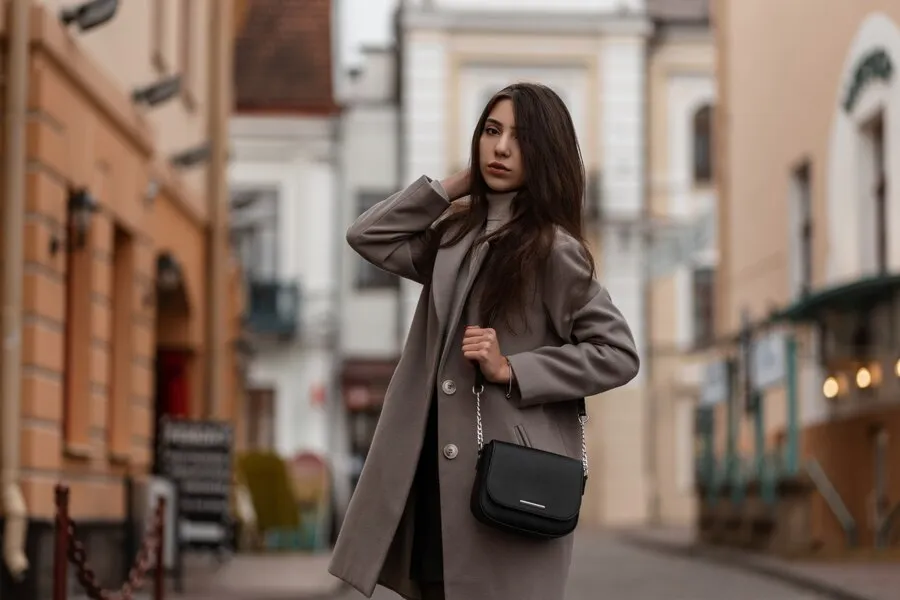The evolution of women’s coats through history is not just a tale of fabric and fashion; it’s a story interwoven with societal changes, cultural shifts, and the relentless pursuit of both functionality and style. From the early days of simple protective garments to today’s fashion statements, the journey of women’s coats reflects the larger narrative of women’s roles in society and their expression of individuality.
The Birth of the Trench Coat
The trench coat, a timeless piece in the wardrobe of women across the globe, has its origins in military wear. Originally designed for British officers in World War I, its practical features— waterproof fabric, deep pockets, and a sensible length— made it an instant hit. Post-war, as women began to adopt elements of menswear into their wardrobes, the trench coat transitioned seamlessly into women’s fashion. This integration of the trench coat into women’s coats signified not just a fashion statement, but a symbol of the changing roles of women in society.
The 1960s saw the trench coat evolve from a practical garment into a fashion icon, thanks to cinema and celebrities. The silhouette slimmed down, catering to the female form, and it became a symbol of sophistication and mystery. The trench coat’s adaptability through the decades—from its military roots to a staple of the modern woman’s wardrobe—showcases its enduring appeal.
The Elegance of the Fur Coat

Fur coats, once a status symbol reserved for the elite, have a contentious but undeniable place in the history of women’s fashion. In the early 20th century, fur signified wealth and luxury, with rare furs like mink, fox, and sable being highly coveted. Women draped in elegant fur coats were often seen as figures of glamour and sophistication, embodying a certain level of social prestige.
However, as attitudes towards animal rights and ethical fashion gained momentum, the fur coat’s popularity saw a decline. Designers and consumers alike began to embrace faux fur options, allowing the elegance of the fur coat to live on in a more ethical and sustainable manner. This shift reflects a broader trend in the fashion industry towards responsible consumption and ethical production practices.
The Practicality of the Pea Coat
The pea coat, with its naval origins, is another example of a functional garment that became a women’s fashion staple. Originally worn by sailors in European and later American navies, the pea coat was designed for warmth and durability. Its heavy wool fabric and double-breasted front provided excellent protection against the harsh sea weather.
In the fashion world, the pea coat was embraced for its blend of simplicity, comfort, and style. Its transition into women’s fashion saw slight alterations in cut and design to cater to a more feminine silhouette, but it retained its fundamental characteristics. The pea coat’s journey from a naval necessity to a fashionable women’s outerwear option underscores the interplay between practicality and style in the evolution of women’s coats.
The Versatility of the Parka

The parka, originally an Inuit invention, was designed for extreme cold weather, and made from seal or caribou skin. Its journey into mainstream women’s fashion began in the 1960s, coinciding with the growing popularity of outdoor and leisure activities. It was practical and unisex, making it an easy addition to the casual wardrobe.
Modern parkas for women combine functionality with fashion. They come in various materials, including down-filled and synthetic options, and are often equipped with fur or faux-fur-lined hoods. The parka’s evolution from a survival garment to a stylish winter coat illustrates the fashion industry’s ability to adapt functional garments for everyday use, balancing utility with contemporary design.
Also Read: Λιβαισ: The First Step to a Healthy Lifestyle
Final Thought: The Timeless Appeal of Women’s Coats
The history of women’s coats is a testament to the dynamic nature of fashion, reflecting changes in society, lifestyle, and attitudes. From the trench to the pea coat, each style encapsulates a specific period and cultural context, yet continues to be reinvented and remain relevant. These coats are not just about keeping warm; they are symbols of the times, markers of social change, and expressions of personal style. As we look back at the iconic coats that have graced the wardrobes of women throughout history, it’s clear that while styles may evolve, the essential role of the coat in women’s fashion remains unchanged.

